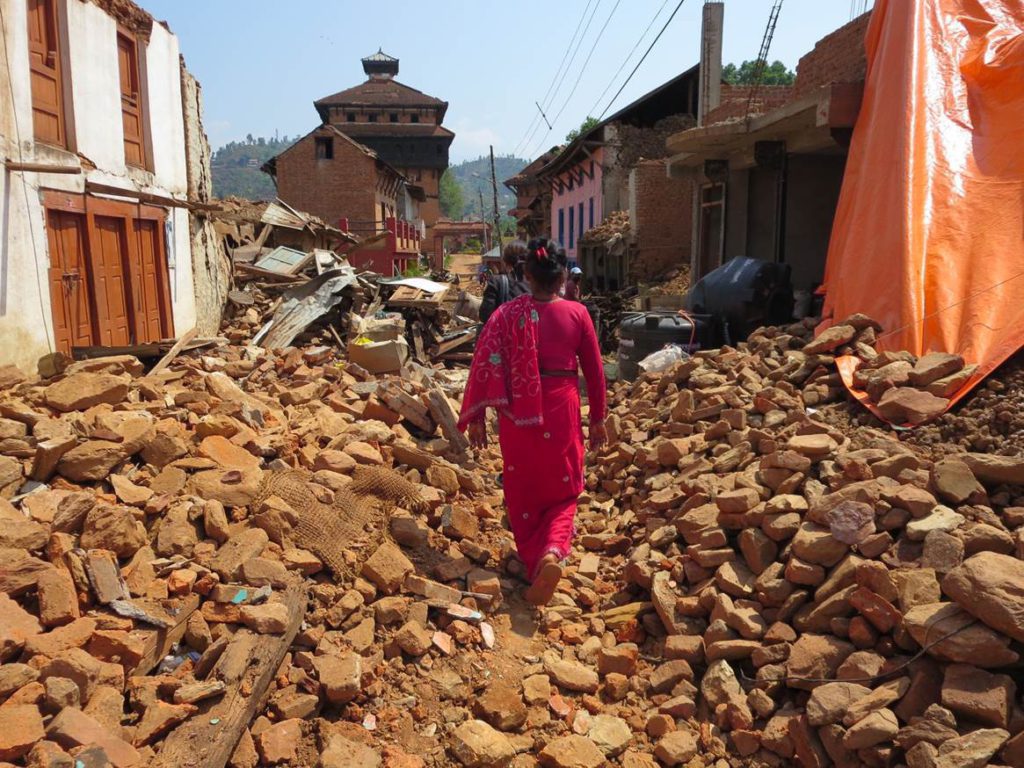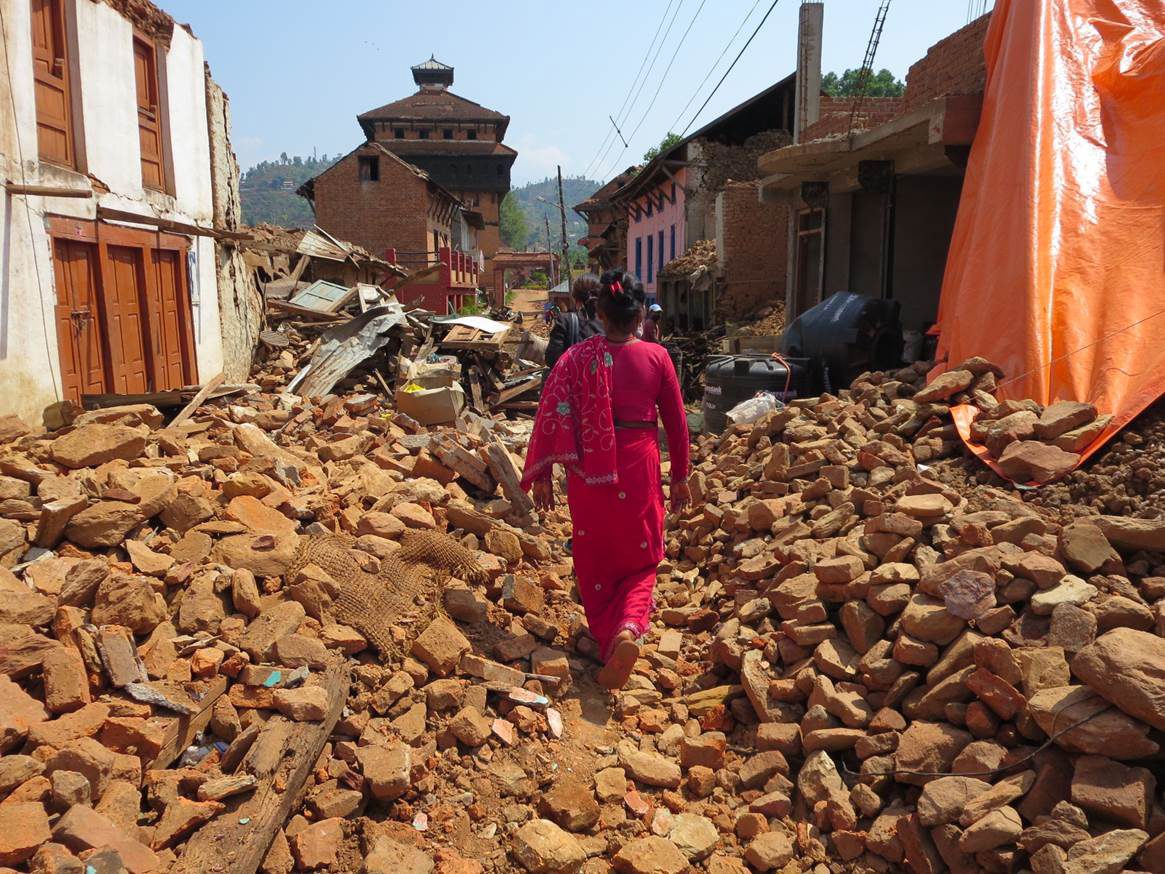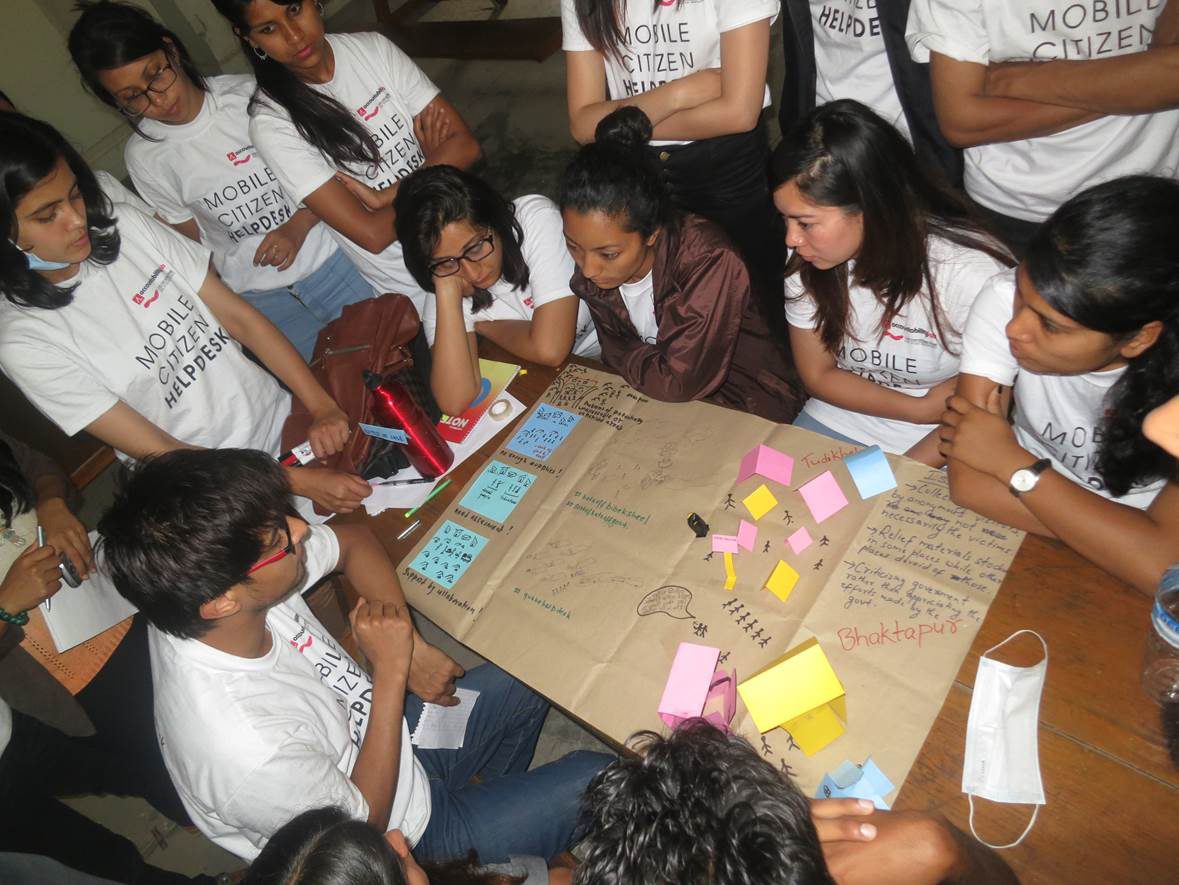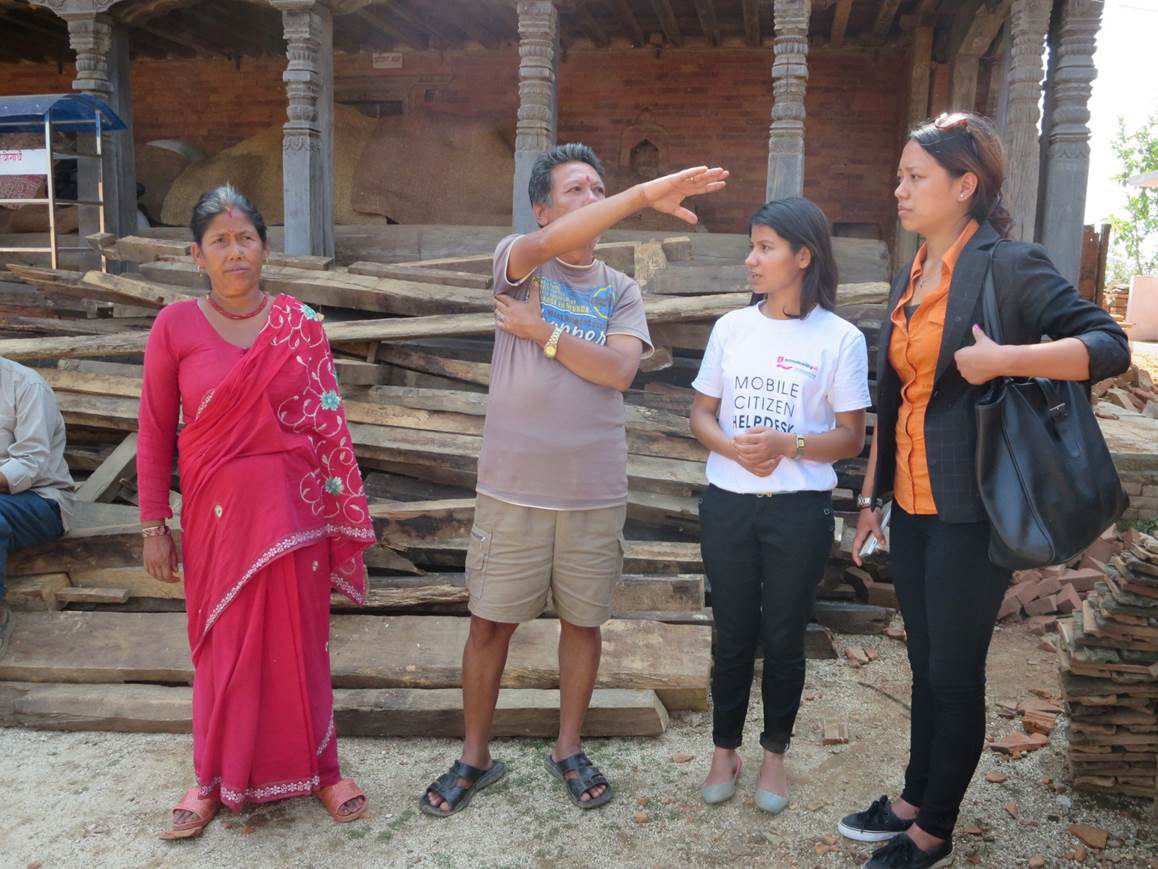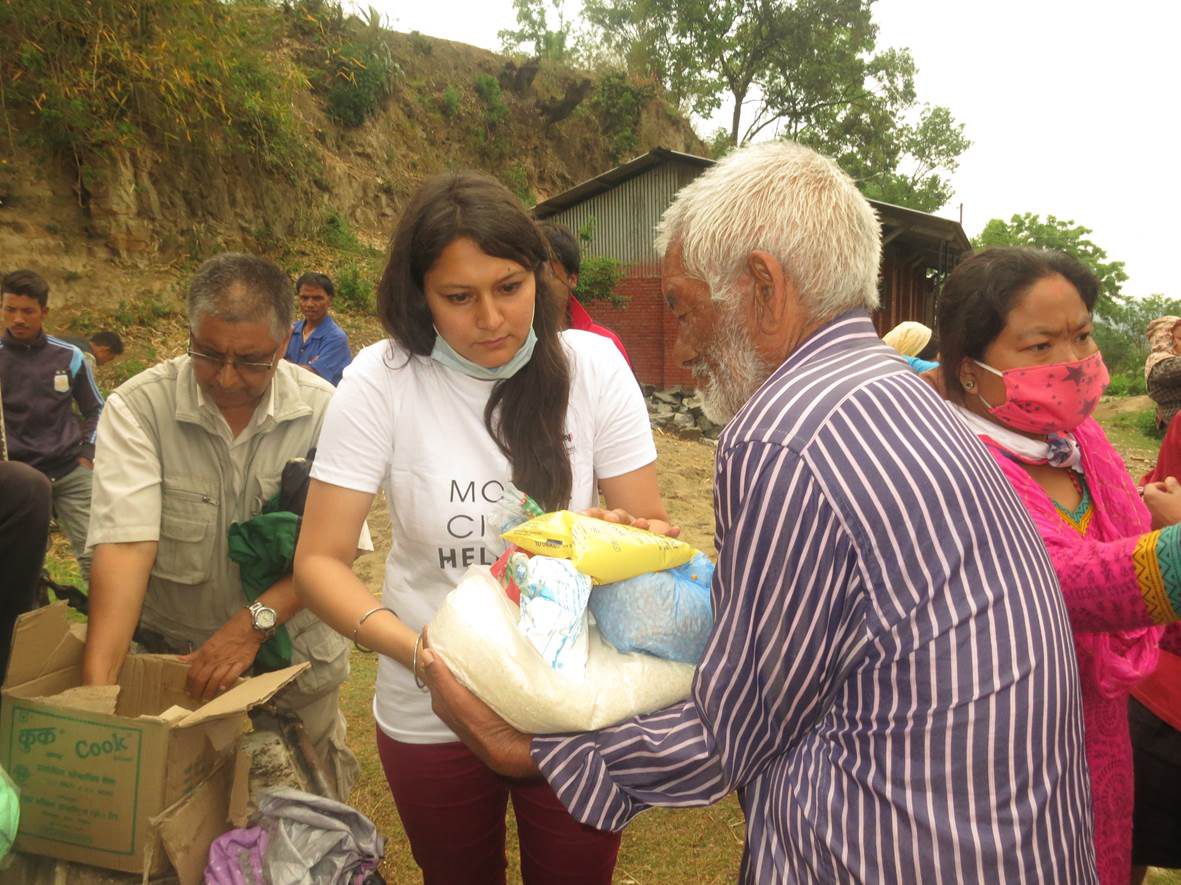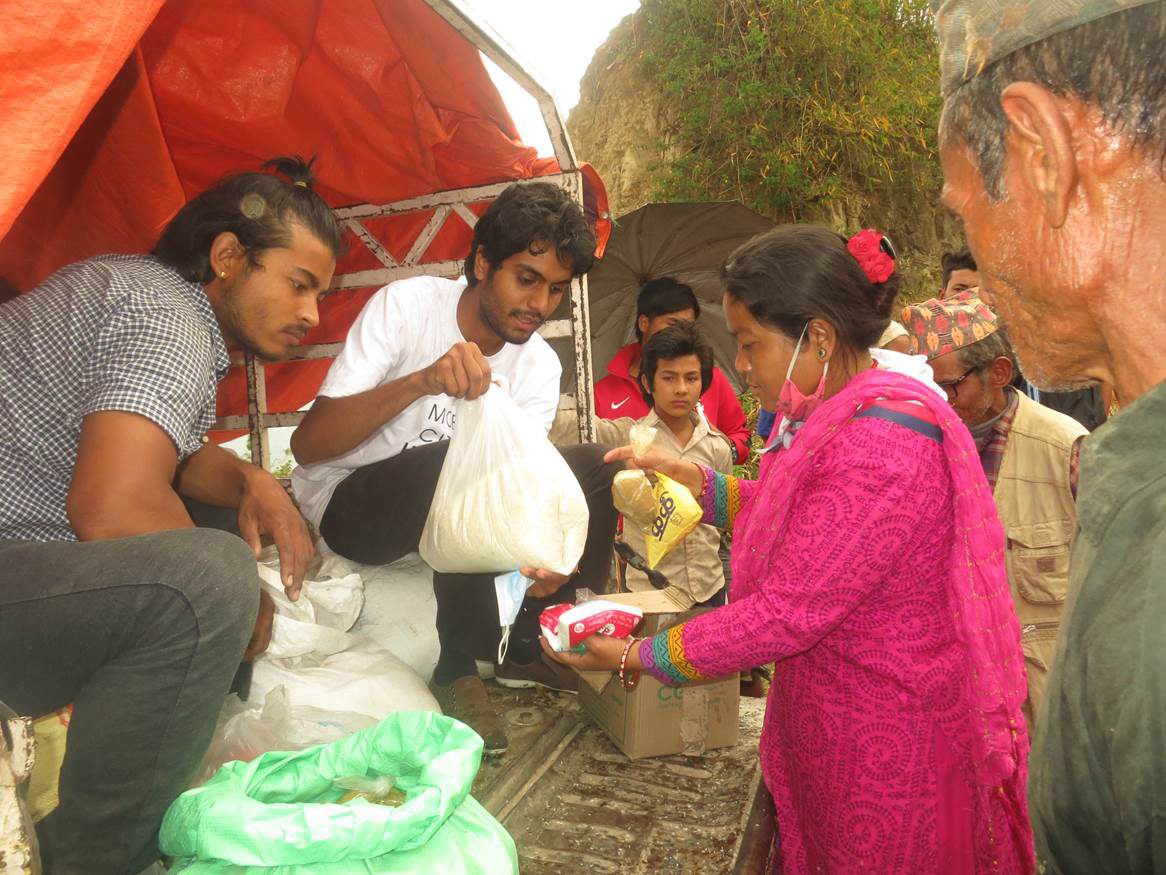By Blake Warenik
April’s earthquake in Nepal displaced an estimated 2.8 million people in its devastating wake. The 7.8-magnitude temblor tragically took the lives of some 8,500 people. Millions in aid poured in from nations around the world, from governments, from companies, and from ordinary people.
But in a part of the world where transportation and data infrastructure are poor in the best of times, how were the nearly 3 million people in Nepal and surrounding countries able to access the aid available to them?
Independent Sector member, Accountability Lab, dispatched a team of volunteers to Nepal and found government-run shelters empty. Many of those made homeless by the catastrophe didn’t know what resources were available to them, or had no way to access them. In response, Accountability Lab deployed “mobile citizen helpdesks”—local student volunteers helping victims chart a path through the relief process and holding authorities accountable—across 15 of the hardest-hit Nepali districts.
Here are some images from Accountability Lab’s work as they helped to make aid more effective in one of the year’s biggest disasters.
-

Nepal-Debris-021317
Just a few days after the rst earthquake, a local woman walks across debris in the Nuwakot Durbar.
-

Nepal-Baby-021317
Children play outside the Tundikhel shelter for displaced people in the center of Kathmandu. Accountability Lab’s mobile citizen helpdesk volunteers, who took this photo, have been connecting citizens with the information they need to solve problems and gathering feedback on the relief process.
-

Nepal-Helpdesk-1-021317
Mobile citizen helpdesk volunteers meet to review progress one week after the earthquake on the basis of field visits to three affected districts. There are now more than 120 Accountability Lab volunteers in the ten most affected districts.
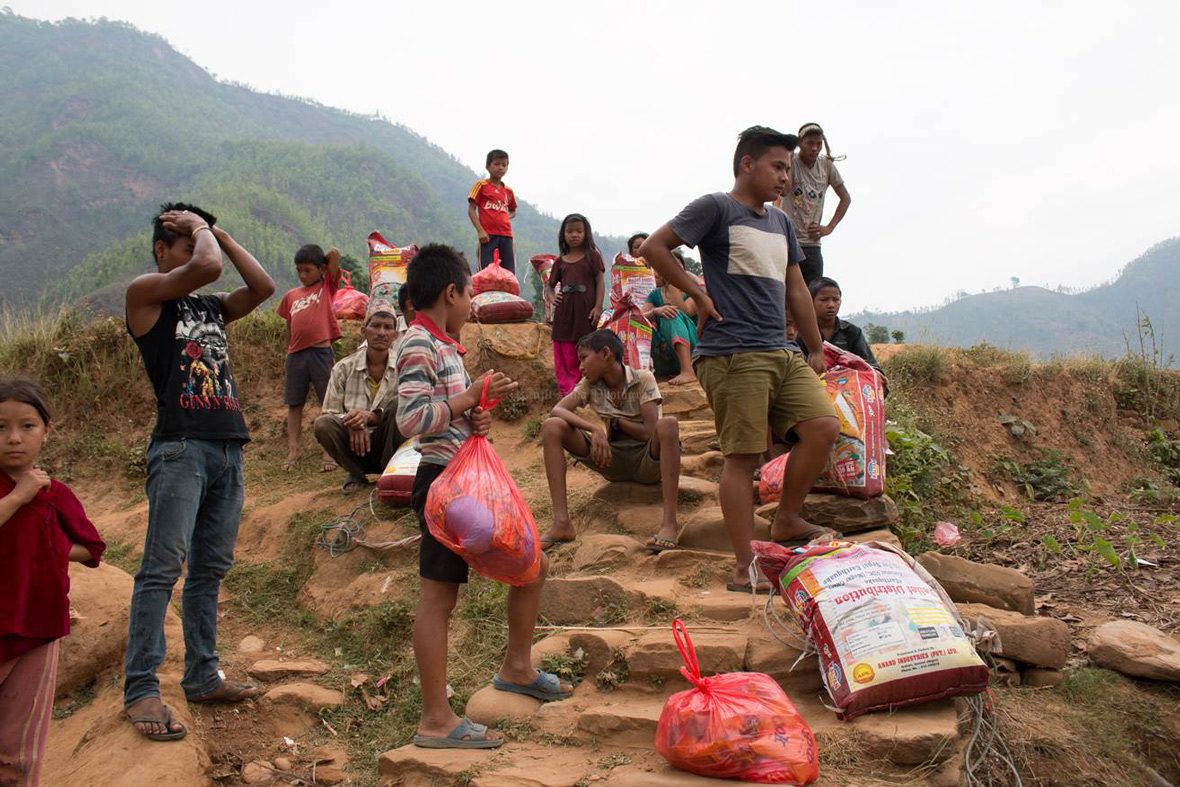
Villagers receive aid in Ranibari village in Dhading district west of Kathmandu several weeks after the earthquake. When the Accountability Lab spoke to them as the aid came in, they said what they most needed was not bags of rice but tin roofing for shelter.
-

Nepal-Volunteers
Mobile citizen helpdesk volunteers Jharana and Ashkia talk with local people in Nuwakot district northwest of Kathmandu about damage, property losses, and the acocuntability of the relief effort.
-

Nepal-Distribution-021317
Team members help with the distribution of relief materials in Duku Chhap, Lalitpur, to the south of Kathmandu. After a eld visit, mobile citizen helpdesk teams identify people with the great- est need and then help distribute items.
-

NepalKshitiz-021317
Volunteer Kshitiz dis- tributes relief materials to earthquake victims in Duku Chhap. Many citizens have indicated that relief agencies drop o aid without assessing needs properly but that the Accountability Lab’s volunteers ‘really listen to our problems.’
Additional Resources
Fellows’ Perspectives: Responding to Disaster in Nepal (May 21, 2015)
